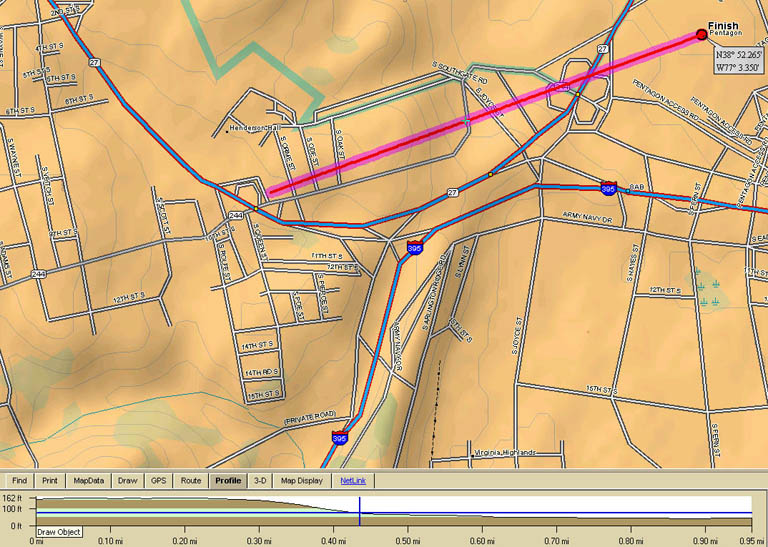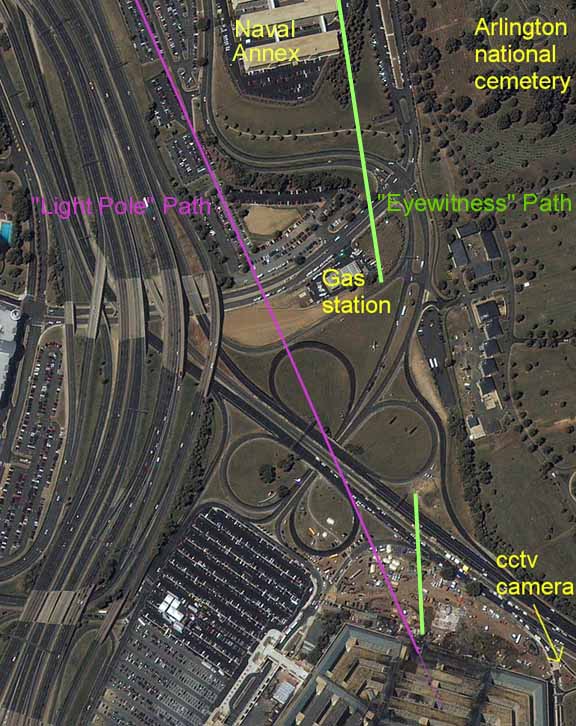http://www.s-t.com/daily/12-01/12-20-01/a02wn018.htm
Army unit piecing together accounts of Pentagon attack
By MILAN SIMONICH, Pittsburgh Post-Gazette
WASHINGTON -- They are soldiers on the capital city's saddest mission.
Each working day, a three-man military history unit uncovers firsthand stories of the Sept. 11 attack on the Pentagon.
The terrorism here killed 189 people, including the five hijackers who crashed a commercial jet into America's military headquarters.
Now the Army's 305th Military History Detachment has the job of making sense of the madness. It is interviewing every willing survivor and witness -- a number that could climb into the thousands -- to write the U.S. government's book on the Pentagon assault and the lessons that can be learned from it.
The job is full of pain.
One Army office in the Pentagon lost 34 of its 65 employees in the attack. Most of those killed in the office, called Resource Services Washington, were civilian accountants, bookkeepers and budget analysts. They were at their desks when American Airlines Flight 77 struck.
Faced with so many funerals of friends and colleagues, the director of the office, Robert Jaworski, agonized over which ones to attend. He could not possibly be at all of them.
Jaworski's plight was extreme, but not so different from what the military historians find every day. Just about every witness or survivor gets emotional when recounting Sept. 11.
"In most interviews there's a tear or two," said Sgt. 1st Class Dennis Lapic of Industry, Pa., who is a member of the history unit.
Before Sept. 11, Lapic spent most of his working life as a territorial sales manager for a manufacturing company. His duties with the 99th Reserve Support Command consumed only a few weeks a year. Now he is on active duty with a two-year assignment to find out everything he can about the attack on Washington.
That job was daunting enough for the Army to dispatch a second unit, the 46th Military History Detachment from Little Rock, Ark., to help with the interviews.
In all, the Army has 66 such units devoted to compiling history from battles and missions around the world. The Pentagon project is unprecedented because it will attempt to unravel an attack on domestic soil that indiscriminately killed civilians.
Even Pearl Harbor was different in that respect. All but 68 of the 2,403 Americans who died in the Japanese attack on Hawaii were soldiers and sailors.
More than three months after the Pentagon was hit, nuggets of information continue to emerge as witnesses step forward.
One day last week, Lapic ventured to Arlington National Cemetery to interview a groundskeeper who watched in horror as the plane crashed into the Pentagon.
The worker, William Middleton Sr., was running his street sweeper through the cemetery when he heard a harsh whistling sound overhead. Middleton looked up and spotted a commercial jet whose pilot seemed to be fighting with his own craft.
Middleton said the plane was no higher than the tops of telephone poles as it lurched toward the Pentagon. The jet accelerated in the final few hundred yards before it tore into the building.
"My sweeper has three wheels. I almost tipped it over as I watched," Middleton said.
In those first minutes, he thought he had seen a plane in trouble, not a terrorist attack.
Middleton and his co-workers at Arlington continued to work Sept. 11 as Washington offices closed and buildings emptied. The cemetery crew had no choice. Funerals were scheduled and burials had to be completed, chaos and all.
As Middleton labored, he could see the destruction less than a mile away at the Pentagon, where the U.S. military mobilized for war.
Another Arlington worker who declined to be interviewed in front of the media told a story that the military historians had not heard in the 244 interviews they had conducted through last week. The man said a mysterious second plane was circling the area when the first one attacked the Pentagon.
The interviewers ask every witness what might have been done to prevent the attack. It is more than protocol. They want to know if somebody may have seen or heard something hours or days earlier that could have been useful in stopping the attack.
When the interviews are completed, the findings will be published in book form and kept at the Army Center of Military History. The researchers hope their work will be a thorough account of the Pentagon attack, as well as a guide on what should be done to prevent terrorist attacks.
Along with facts for the book, the historians collect tidbits on what the attack did to the nation's psyche.
"I felt complete anger. If I wasn't an old man, I might volunteer to go back into the service," said Middleton, 54.
The history detachments for the Pentagon project are based at Fort McNair, a Washington post established in 1791 as Old Arsenal Penitentiary. Until now, the installation's most notable brush with American history involved the murder of President Lincoln.
Four people who conspired with Lincoln assassin John Wilkes Booth were hanged there July 7, 1865. The executions occurred as a nation torn by civil war tried to heal itself.
Now the military historians see their research on the Pentagon attack as one way to help people cope with today's crisis.
"There can be a cathartic effect to people talking about what they have seen and gone through," said Maj. Robert Smith of Germantown, Md., commander of the 305th History Detachment.
Army unit piecing together accounts of Pentagon attack
By MILAN SIMONICH, Pittsburgh Post-Gazette
WASHINGTON -- They are soldiers on the capital city's saddest mission.
Each working day, a three-man military history unit uncovers firsthand stories of the Sept. 11 attack on the Pentagon.
The terrorism here killed 189 people, including the five hijackers who crashed a commercial jet into America's military headquarters.
Now the Army's 305th Military History Detachment has the job of making sense of the madness. It is interviewing every willing survivor and witness -- a number that could climb into the thousands -- to write the U.S. government's book on the Pentagon assault and the lessons that can be learned from it.
The job is full of pain.
One Army office in the Pentagon lost 34 of its 65 employees in the attack. Most of those killed in the office, called Resource Services Washington, were civilian accountants, bookkeepers and budget analysts. They were at their desks when American Airlines Flight 77 struck.
Faced with so many funerals of friends and colleagues, the director of the office, Robert Jaworski, agonized over which ones to attend. He could not possibly be at all of them.
Jaworski's plight was extreme, but not so different from what the military historians find every day. Just about every witness or survivor gets emotional when recounting Sept. 11.
"In most interviews there's a tear or two," said Sgt. 1st Class Dennis Lapic of Industry, Pa., who is a member of the history unit.
Before Sept. 11, Lapic spent most of his working life as a territorial sales manager for a manufacturing company. His duties with the 99th Reserve Support Command consumed only a few weeks a year. Now he is on active duty with a two-year assignment to find out everything he can about the attack on Washington.
That job was daunting enough for the Army to dispatch a second unit, the 46th Military History Detachment from Little Rock, Ark., to help with the interviews.
In all, the Army has 66 such units devoted to compiling history from battles and missions around the world. The Pentagon project is unprecedented because it will attempt to unravel an attack on domestic soil that indiscriminately killed civilians.
Even Pearl Harbor was different in that respect. All but 68 of the 2,403 Americans who died in the Japanese attack on Hawaii were soldiers and sailors.
More than three months after the Pentagon was hit, nuggets of information continue to emerge as witnesses step forward.
One day last week, Lapic ventured to Arlington National Cemetery to interview a groundskeeper who watched in horror as the plane crashed into the Pentagon.
The worker, William Middleton Sr., was running his street sweeper through the cemetery when he heard a harsh whistling sound overhead. Middleton looked up and spotted a commercial jet whose pilot seemed to be fighting with his own craft.
Middleton said the plane was no higher than the tops of telephone poles as it lurched toward the Pentagon. The jet accelerated in the final few hundred yards before it tore into the building.
"My sweeper has three wheels. I almost tipped it over as I watched," Middleton said.
In those first minutes, he thought he had seen a plane in trouble, not a terrorist attack.
Middleton and his co-workers at Arlington continued to work Sept. 11 as Washington offices closed and buildings emptied. The cemetery crew had no choice. Funerals were scheduled and burials had to be completed, chaos and all.
As Middleton labored, he could see the destruction less than a mile away at the Pentagon, where the U.S. military mobilized for war.
Another Arlington worker who declined to be interviewed in front of the media told a story that the military historians had not heard in the 244 interviews they had conducted through last week. The man said a mysterious second plane was circling the area when the first one attacked the Pentagon.
The interviewers ask every witness what might have been done to prevent the attack. It is more than protocol. They want to know if somebody may have seen or heard something hours or days earlier that could have been useful in stopping the attack.
When the interviews are completed, the findings will be published in book form and kept at the Army Center of Military History. The researchers hope their work will be a thorough account of the Pentagon attack, as well as a guide on what should be done to prevent terrorist attacks.
Along with facts for the book, the historians collect tidbits on what the attack did to the nation's psyche.
"I felt complete anger. If I wasn't an old man, I might volunteer to go back into the service," said Middleton, 54.
The history detachments for the Pentagon project are based at Fort McNair, a Washington post established in 1791 as Old Arsenal Penitentiary. Until now, the installation's most notable brush with American history involved the murder of President Lincoln.
Four people who conspired with Lincoln assassin John Wilkes Booth were hanged there July 7, 1865. The executions occurred as a nation torn by civil war tried to heal itself.
Now the military historians see their research on the Pentagon attack as one way to help people cope with today's crisis.
"There can be a cathartic effect to people talking about what they have seen and gone through," said Maj. Robert Smith of Germantown, Md., commander of the 305th History Detachment.


